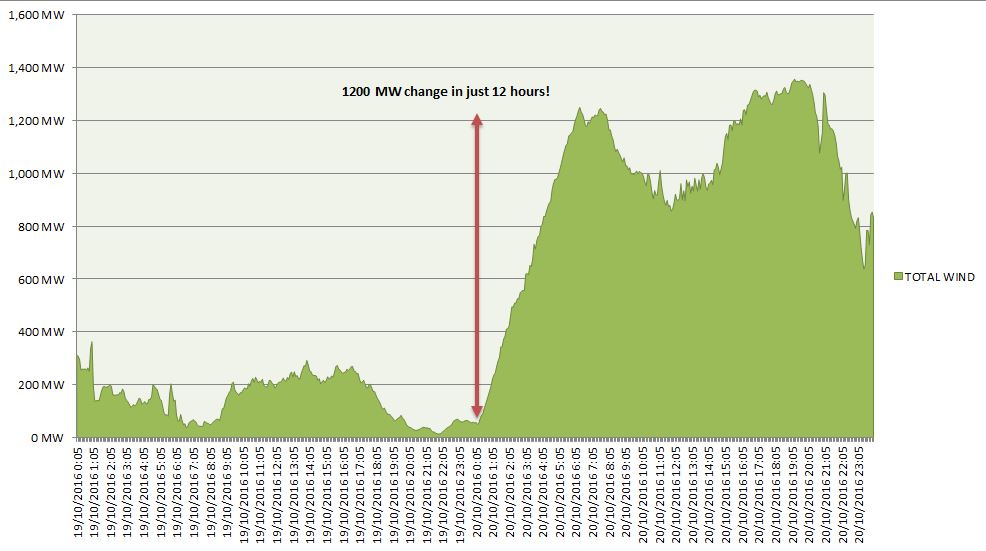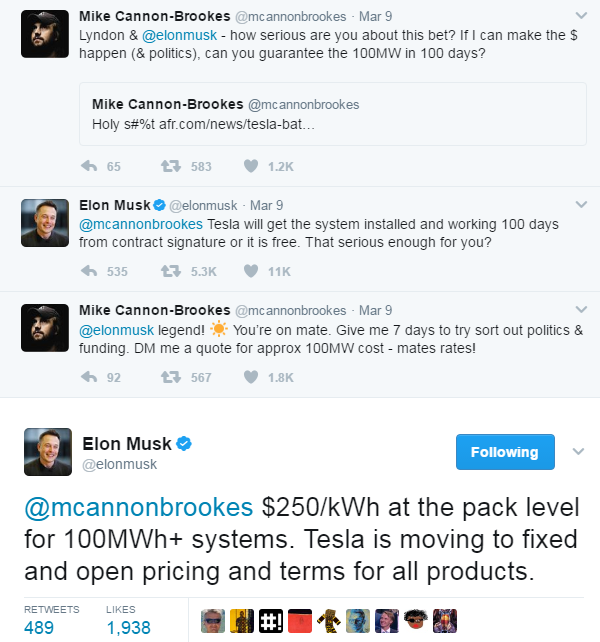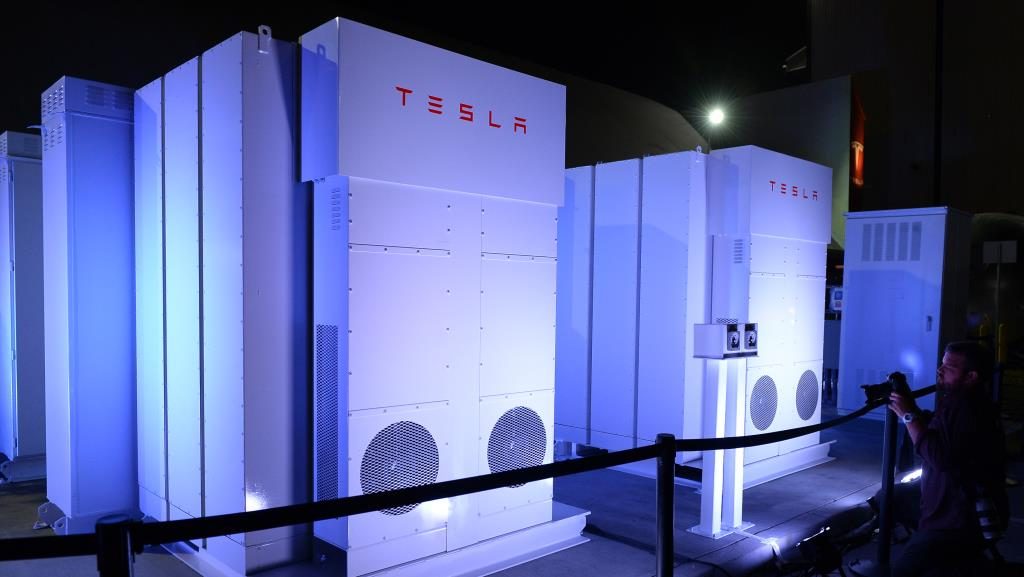As I am sure everyone must have heard about, Elon Musk’s latest Twitter adventure. You know the one when he promised to solve South Australia’s “energy crisis” within 100 days?
But what is it that needs solving and how is Tesla’s real life Tony Stark CEO proposing to do that?
Why South Australia?
It’s been quite an unpleasant experience to be a South Australian electricity consumer in the past few years. Not only because that Australian state had the highest electricity prices in the interconnected states located on Australia’s East Coast, but also because of the series of blackouts and load shedding((https://en.wikipedia.org/wiki/Rolling_blackout)) that occurred in the past few months.
A few quick energy facts about South Australia (SA):
- The last coal fired power plant was shut down 9 May 2016.
- 37% of the total installed generation (excluding residential rooftop solar PV) consists of windfarms (almost 1600 MW).
- The rest of the SA generation fleet is natural gas fuelled; mostly open cycle gas turbines (OCGTs) or reciprocating engines ran on gas.
- SA has two interconnectors to one of its neighbouring states with a total nominal capacity of 850 MW.
- Minimum demand is below 600 MW while maximum demand was above 2700 MW in 2016. Average demand was slightly below the total built in wind capacity (1500 MW).((SA is similar to Slovenia in terms of its yearly consumption of electricity as both are in the ballpark of 13-14 TWh/year. SA’s total demand tends to be more “peaky” than Slovenia’s, that was slightly above 2050 MW in the past few years. However, Slovenia is much more interconnected with neigbouring states. The Croatia-Slovenia interconnector alone has the net transfer capacity of 1300-1400 MW.))
One of the reasons why SA has so much wind is because of its excellent wind resources. The other reason is Australia’s rather generous incentive policy on building renewable generation and the dramatic fall of costs in installing new wind generation. Also, wind does not have a fuel cost, unlike fossil fuel generation.
The bad thing about wind though is that it’s intermittent. I mean it can vary between 13 MW to 1237 MW within less than 12 hours.

It’s not hard to see that its intermittency makes wind the perfect scapegoat for any power system security problem that may occur. It is also not hard to see, that one needs a scapegoat when a whole state in a developed country loses power for hours, or in some cases, weeks.
As for the prices, the way the Australian market operates is when the wind blows, wholesale prices plummet, sometimes below zero ((Windfarms have the incentive to produce electricity even at times when the prices are negative, because of the price of certificates they are entitled to after each produced MWh. The price of these certificates may be as high as $85/MWh.)), but when it doesn’t, expensive OCGTs are setting a price at incredibly high levels. By incredibly high I mean market price cap high, which is currently set at $14,000/MWh. Sprinkle a bit of market power and oligopoly-like ownership conditions on top, add the high risk coming from the volatility of wholesale prices and soaring gas prices as lucrative LNG exports divert supply away from domestic consumption, and you’ll end up with the highest priced region in Australia, with the least reliable power sources.
Why Tesla?
So SA has a few problems, no doubt about that. But could Tesla batteries solve all of them?
After Mike Cannon-Brookes (founder and CEO of an Australian software company) challenged Elon Musk about his statement for solving SA’s energy crisis in 100 days on Twitter, Musk replied that he’d indeed do that, and it would be free if it wasn’t completed under the short time frame.

The next thing we know, both SA’s and the Australian (federal) prime minister were on the phone with Tesla’s CEO discussing the details. The SA government announced that they’ll unveil its long-awaited and “dramatic” plan for power today (March 14, 2017) at 11:00 am local time.
I won’t try and guess what that statement’s going to be. It may or may not be about accepting Tesla’s offer. Instead here are some considerations about what batteries could or could not do to SA’s power market.
Size and capacity
It seems like Mike Cannon-Brookes either does not know, or does not care about the difference between what a 100 MW and a 100 MWh battery system is. 100 MW is a nice and round number and in SA it also has a symbolic meaning, because this is how much load was supposed to be shed on February 8, 2017 in order to avoid another blackout in SA. Notice, that Musk does not speak in MWs. When he replied to Cannon-Brookes’ inquiry about “mates rates” for the system he replied that a 100 MWh+ system he’d charge $/250/kWh.

The difference between MW and MWh is best explained with a diameter of a water pipe and the amount of water stored in a water tank. You may have 200 litres of water in your water tank stored, but the diameter of your outlet pipe (and of course the pressure it can handle) will limit how much water can come out at the time.
Similarly, if you have a battery system that can discharge 100 MWh of power to the system, it can either be one that does it in an hour (that would be a 100 MW system) or one that does it in two hours (50 MW system, operating for two hours = 100 MWh). However, Tesla seems to have experience with 80 MWh systems (in California and Ontario, Canada) which discharge in four hours and have 20 MW capacity. It is not yet clear how the 100 MWh system is going to be designed, but it appears that it’s either going to be one with 25 MW capacity with 4 hours of discharge or one with 50 MW capacity and two hours of discharge.
Why would that be a fix?
In terms of capacity, 25 or even 50 MW does not seem to be a huge one, even in SA. The so called “peaker plants” (diesel generators that jump on and make money from generating at high price events) are usually between 20-50 MW in size. ((The capital cost of building a 100 MW OCGT plant which is similar to a diesel generator in its function was estimated to cost around A$73.8 million (US$55.7 mn). It is not entirely clear what the final cost of Tesla’s installation would end up looking like, can be between US$25-50 mn, or more)) Adding something that can provide additional power supply at such events is like putting another peaker plant to the mix. It is true, that a battery has a much better efficiency (usually around 85-90%) than a diesel generator with a short run marginal cost depending on the cost of electricity at the time when it was withdrawing electricity from the grid. This could also mean utilising negative prices, from time to time. A battery is likely to be ahead of diesel on the merit order, however it is incentivised to “shave peaks” by supplying additional capacity and compete with peaker plants on the market. While it is likely to reduce the sharpness of the spikes, the battery will draw power (increase demand and price) at other times. As David Fickling from Bloomberg put it, by arbitraging prices, batteries tend to “cannibalize the volatility from which they seek to profit”.((See here))
Also 25 or even 50 MW is unlikely to have a substantial direct effect on the price in a jurisdiction where average demand is around 1500 MW. Indirect beneficial effects may come from providing better certainty about secure supply (not having an imminent threat of a black out is always good) and also from smoothing out spikes in demand and price.
Having said that, batteries can do what diesel generators cannot: react to changes in demand almost instantaneously. Even for the fastest diesel engine takes a few minutes to start, while a battery can react in a second (it could, theoretically react in a fraction of a second, but there are technical problems with how such a reaction could be controlled). So Tesla’s batteries could solve or at least substantially improve the reliability problems SA is facing right now. Very often, all it takes is just a few seconds to save a system from going black, and batteries could just do exactly that.
UPDATE:
At 11:00 am, March 14, 2017, the South Australian government launched a website that outlines their plan for SA’s energy future. In short the plan is aimed to:
- build Australia’s largest battery of 100 MW capacity
- build a government-owned 250 MW gas-fired power plant that would provide emergency back-up power and system stability services
- introduce Ministerial powers of directing power generation in cases of emergency
- incentivise increased gas production in SA
- introduce an “Energy Security Target” with the goal of further increasing renewable generation.
The total (and initial) value of the package is set at A$550 million, out of which A$150 million is dedicated to storage
Notes:
1) https://en.wikipedia.org/wiki/Rolling_blackout
2) SA is similar to Slovenia in terms of its yearly consumption of electricity as both are in the ballpark of 13-14 TWh/year. SA’s total demand tends to be more “peaky” than Slovenia’s, that was slightly above 2050 MW in the past few years. However, Slovenia is much more interconnected with neigbouring states. The Croatia-Slovenia interconnector alone has the net transfer capacity of 1300-1400 MW.
3) Windfarms have the incentive to produce electricity even at times when the prices are negative, because of the price of certificates they are entitled to after each produced MWh. The price of these certificates may be as high as $85/MWh. See: http://www.abc.net.au/news/2017-02-23/australian-renewable-energy-target-explained/8290460
4) The capital cost of building a 100 MW OCGT plant which is similar to a diesel generator in its function was estimated to cost around A$73.8 million (US$55.7 mn). It is not entirely clear what the final cost of Tesla’s installation would end up looking like, can be between US$25-50 mn, or more